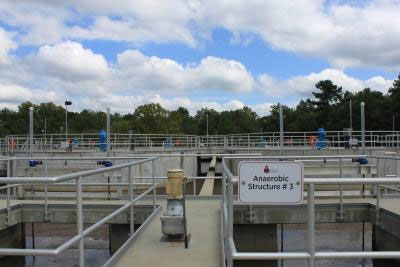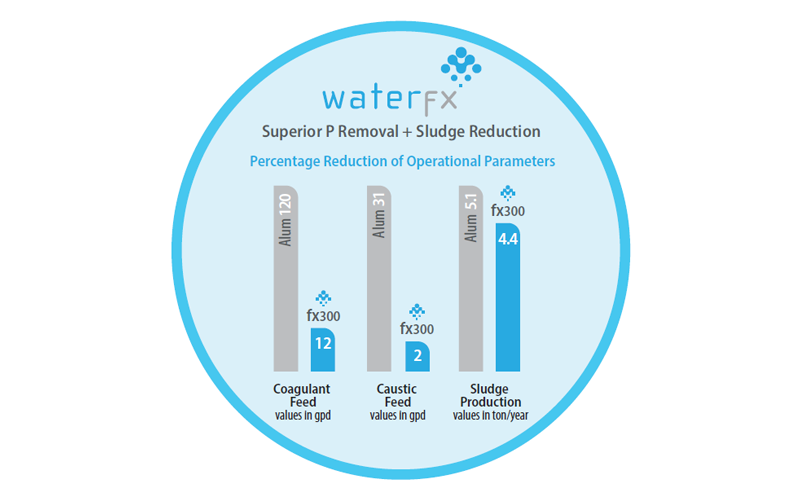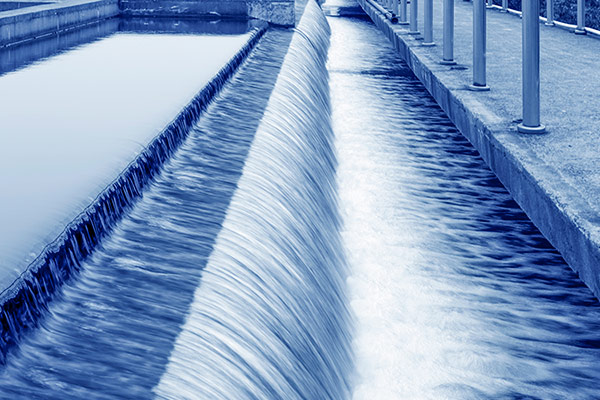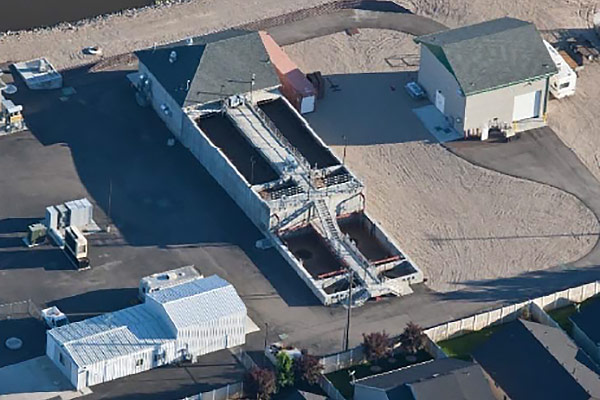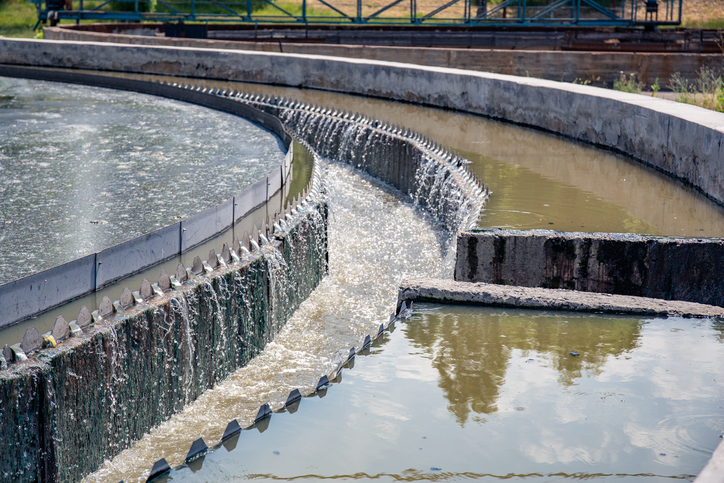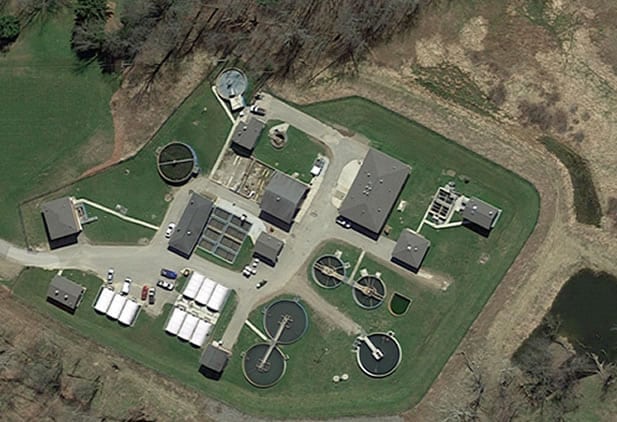Case Studies
Neo WaterFX (formerly RE300) Case Studies
Neo WaterFX100 (formerly RE100) and Neo WaterFX300 (formerly RE300) have been used successfully at several water treatment plants in the U.S. In fact, lanthanide salt technology has been used in over 50 facilities in over 12 states, including Wisconsin, Virginia, Pennsylvania, New York, Minnesota, Vermont, Ohio, Illinois, Wisconsin, Indiana, Texas, Washington.
Below are summaries of the results from using Neo WaterFX (formerly RE300).
Results from Dallas, GA
An alternative to Poly Aluminum Chloride
The City of Dallas Wastewater Treatment Plant (WWTP) in Georgia treats mainly municipal water in the City of Dallas and surrounding Paulding County just northwest of Atlanta. Dallas’s treatment process is a fairly typical conventional activated sludge plant with tertiary cloth media filters, and they had been using a form of Poly Aluminum Chloride (often abbreviated as PAC or PACL) in their mixed liquor and secondary clarifiers for phosphorus control.
In the summer of 2020, the City of Dallas decided to evaluate alternative options for phosphorus control and decided to trial Neo WaterFX 300 because of the potential benefits in this system. In this application these benefits included a significant reduction in chemical usage, a more stable chemical, reduction in sludge sent for disposal, reduced need for caustic/alkalinity supplement, and algae control.
In May of 2021 the city of Dallas committed to a trial with Neo WaterFX to confirm these estimated benefits and after a few months of success they have decided to continue using Neo WaterFX and have been using it ever since.
Results from Jordanelle Special Service District (JSSD)
Ultra Low Level Phosphorus Removal in Utah
Jordanelle Special Service District (JSSD) water treatment facility treats water from multiple communities in the area south of Park City, Utah.
With approximately 375,000 gallons per day (gpd) average flow, this municipal wastewater MBR (membrane bioreactor) facility discharges to the Timpanogos Canal and Wasatch Canal and eventually to the Jordanelle Reservoir. With a future effluent total phosphorus (TP) limit of 0.06 mg/L (90-Day Average), this facility was given one of the lowest TP limits in Utah. They had been trying to achieve this low TP limit using aluminum sulfate (alum) for phosphate removal. The facility also used sodium hydroxide (caustic) to supplement the water alkalinity to offset the acidic aluminum sulfate. However, even with high alum doses, it proved difficult and occasionally insufficient for maintaining such a low P concentration in their effluent. Then, in November of 2021, the Jordanelle facility trialed an alternative chemical for P removal, using Neo Water Treatment’s Neo WaterFX 300. WaterFX 300 was able to keep this facility TP compliant year-round, while simultaneously reducing the need for alkalinity supplementation with caustic. The reduction in chemicals required to remove phosphorus at this facility proved to be an operational and financial benefit.
Results from Coppermine WRF
Coppermine WRF (water reclamation facility) serves an area in Paulding County Georgia, a rapidly growing suburb of Atlanta.
With approximately 800,000 GPD average flow, this municipal wastewater MBR (membrane bioreactor) facility discharges to a local stream leading to the sensitive Chattahoochee River in Georgia. Until May of 2020, ferric chloride was used to meet an effluent total phosphorus (TP) limit of 0.13 mg/L. Sodium Hydroxide (caustic) was also required for supplementing the water alkalinity to offset the acidic ferric chloride. In May of 2020, the Coppermine facility trialed a replacement for ferric chloride: Neo Water Treatment’s WaterFX 300, which was able to keep the facility TP compliant while simultaneously reducing the need for alkalinity supplementation and reducing the total sludge volume sent for offsite disposal. In 2021 this facility is expected to double the average flow to 1.5-2.0 MGD which compounds the benefits introduced by the 2020 Neo WaterFX chemical trial.
Results From Star Sewer
Star Sewer Wastewater Treatment Plant is a 1.25 MGD Membrane Bio Reactor (MBR) municipal facility in Star Idaho near Boise. Star has been issued a seasonal total phosphorus (TP) limit of 0.07 mg/L from May to September and 0.35 the rest of the year effective in April of 2025. After evaluating options to meet this limit including capital projects and chemical coagulants, the facility chose to dose Neo WaterFX 300 directly into the MBR system. From May of 2018 through July 2019, WaterFX 300 was dosed at an average rate of 20-25 gal/day. While using WaterFX 300, the effluent TP was reduced below the 0.07 mg/L limit and the effluent total suspended solids (TSS) and turbidity were also reduced. Thus, the facility continues to meet the effluent TP limit requirement and has avoided an approximate$5.2 million installation of additional capital equipment for tertiary filtration.
Results From Geneseo, NY
Geneseo Wastewater Treatment Plant is a 1.5 MGD municipal facility in the Finger Lakes region in upstate New York with a seasonal total phosphorus (TP) limit of 1.0 mg/L. After evaluating options to meet this limit including capital projects and various coagulants, the facility chose to dose Neo WaterFX300 (formerly RE300) into the primary clarifier influent. For two years Neo WaterFX300 (formerly RE300) has been dosed between May and October at an average of about 22 gal/day. While dosing, the effluent TP has been reduced to below the limit and the effluent total suspended solids (TSS) and biological oxygen demand (BOD) are also reduced. Thus the facility continues to meet the effluent TP limit and avoided an approximate $1.5 million installation of additional capital equipment.
Results From Albion, PA
A 770,000 GPD municipal wastewater treatment plant in Albion, Pennsylvania, which was discharging to a stream leading to Lake Erie, was having difficulty meeting its total aluminum (1.1 mg/L) and total phosphorus (1.0 mg/L) permits. After months of dosing 60 ppmv of either ferric chloride or PAC prior to the secondary clarifier, the plant was unable to meet its permit limits. Attempts to meet the permit by increasing the dosage rate of either coagulant were unsuccessful. When higher doses of ferric chloride were attempted, buried chemical feed lines corroded, leading to expensive repairs. Higher doses of PAC caused aluminum concentrations in the final effluent to exceed the plant’s aluminum permit. Since the plant was running out of options, plant management decided to conduct a full-scale trial with
Neo WaterFX100 (formerly RE100).

